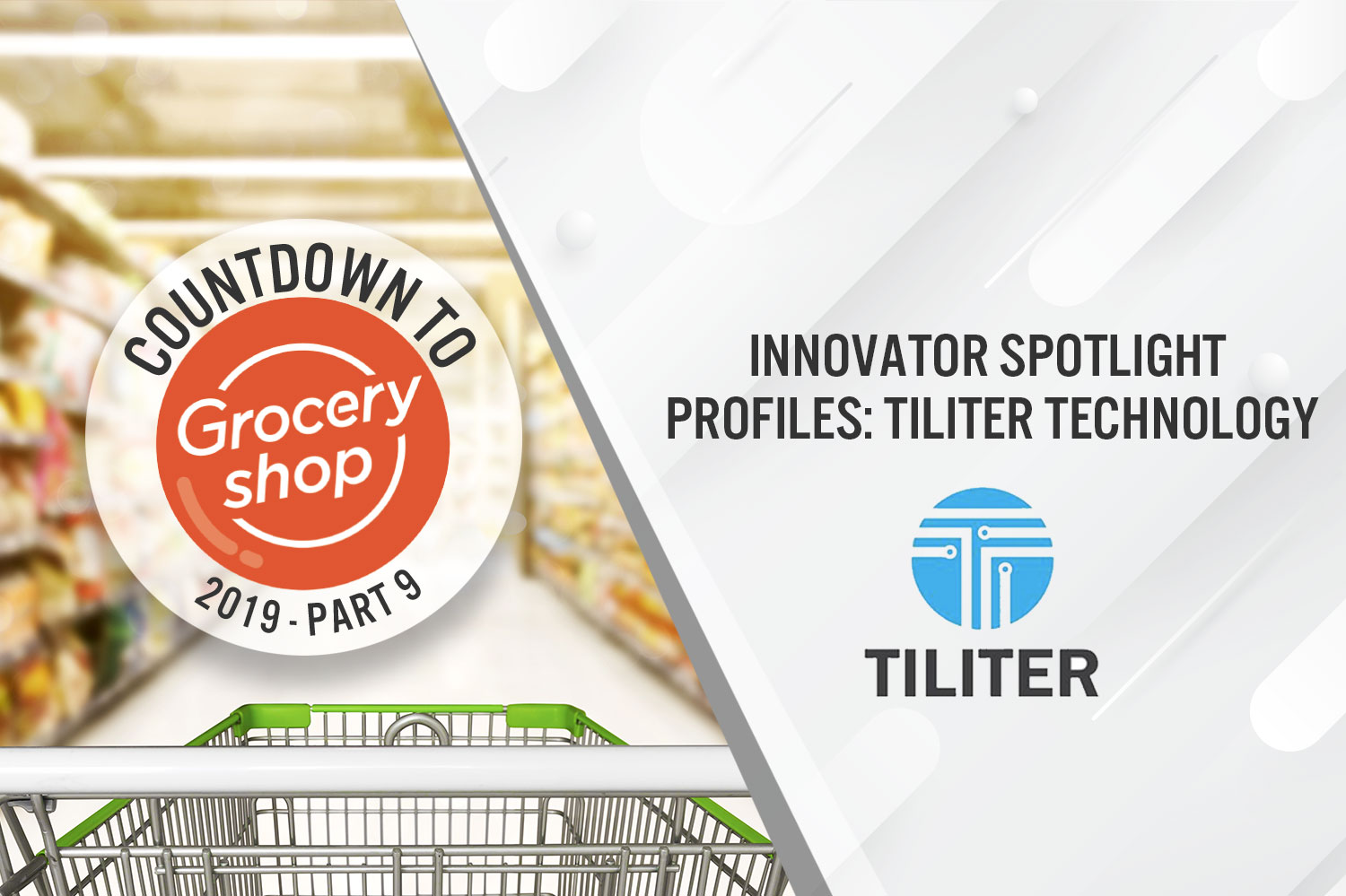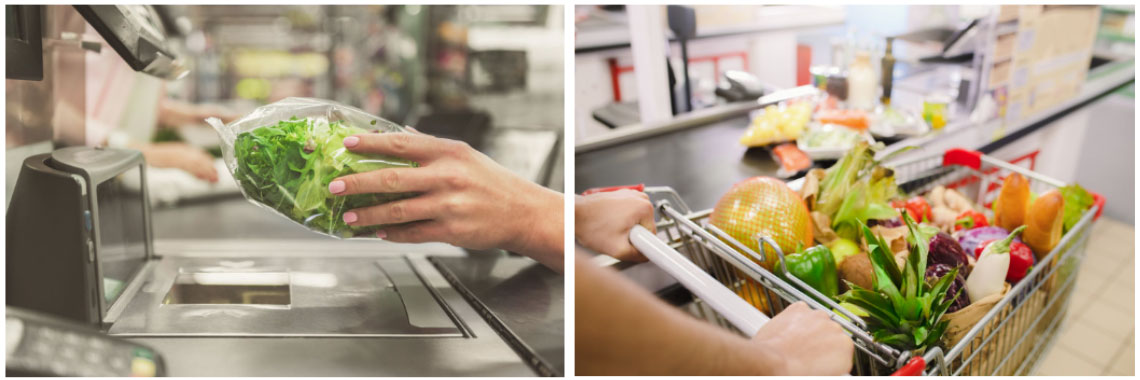
DIpil Das
Groceryshop 2019
The Coresight Research team will be attending and participating in the Groceryshop 2019 conference, which runs September 15-18 in Las Vegas.
The conference is expected to bring together over 3,000 attendees and more than 200 speakers. Discussion topics will include the transformation of the retail industry, including convenience stores, supermarkets and e-commerce, and changes in the production and distribution of CPGs across multiple retail verticals.
The event also covers the rapid shifts in how consumers discover, shop and buy — from the use of new technologies and business models to the latest shopper trends.
Emerging Technology Spotlight Session
This is the second year the Coresight Research team will support Groceryshop’s early-stage technology startup event: On September 15, Coresight Research CEO and Founder Deborah Weinswig will emcee the Emerging Technology Spotlight, which features 20 innovative technology companies presenting their solutions to solve major retail problems.
Groceryshop selected the participating startups based on their solutions, looking for companies that solve some of the most pressing challenges in grocery, e-commerce, food and CPG. All participating startups offer business-to-business (B2B) solutions. Over 130 companies applied to present at the event: From that group, we selected the 20 using a rigorous vetting process.
These are some of the selection criteria:
 Source: Tiliter Technology [/caption]
What Problem Does Tiliter Technology Solve?
The company believes its solution addresses problems such as long lines (by speeding the checkout process by cutting the number of items that need manual product entry), self-checkout frustration and plastic pollution.
Research by environmental consultants Euonomia estimate that top supermarkets in Europe are creating a plastic waste problem in excess of 800,000 tonnes per year: Because the solution can identify fresh produce such as red apples and avocadoes with automatic detection, it may reduce the use of many plastic bags for fruits and vegetables.
Retailers have thousands of vendors from which to choose when selecting a barcode scanning system — many of which are not plug-and-play solutions and may require substantial time and effort to integrate into current business processes. Tiliter allows for an easy upgrade of existing computer and manual processes to include its solution.
Headquarters
Sydney.
Funding Stage
Seed.
Management Team
Cofounder and CEO Marcel Herz has a background in mechanical, bio-medical and design engineering.
Cofounder and CTO Christopher Sampson was test systems engineer at Cochlear prior to cofounding Tiliter Technology. He has a master’s degree in engineering science, systems and control from the University of New South Wales in Australia.
Co-founder and CTO Martin Karafilis cofounded Karra’s Lures, an environmentally friendly fishing lure company. He has a background in business, human resource management and marketing.
Market Potential
According to Global Market Insights, the global self-checkout system market is set to exceed $4 billion by 2024.
Company Outlook
In August 2019, Tiliter received its first orders and is currently working in partnerships with several start-up programs, including the Autodesk Entrepreneur Impact Group and Microsoft for Startups Program. The company is actively expanding its team and focussing on US and Europe launches. Tiliter may expand its offering into a business-to-business (B2B), business-to-consumer platform (B2C) so anyone in any industry can use the software to build their own recognition solution so it can be integrated to existing computer systems or used as a stand-alone software.
Source: Tiliter Technology [/caption]
What Problem Does Tiliter Technology Solve?
The company believes its solution addresses problems such as long lines (by speeding the checkout process by cutting the number of items that need manual product entry), self-checkout frustration and plastic pollution.
Research by environmental consultants Euonomia estimate that top supermarkets in Europe are creating a plastic waste problem in excess of 800,000 tonnes per year: Because the solution can identify fresh produce such as red apples and avocadoes with automatic detection, it may reduce the use of many plastic bags for fruits and vegetables.
Retailers have thousands of vendors from which to choose when selecting a barcode scanning system — many of which are not plug-and-play solutions and may require substantial time and effort to integrate into current business processes. Tiliter allows for an easy upgrade of existing computer and manual processes to include its solution.
Headquarters
Sydney.
Funding Stage
Seed.
Management Team
Cofounder and CEO Marcel Herz has a background in mechanical, bio-medical and design engineering.
Cofounder and CTO Christopher Sampson was test systems engineer at Cochlear prior to cofounding Tiliter Technology. He has a master’s degree in engineering science, systems and control from the University of New South Wales in Australia.
Co-founder and CTO Martin Karafilis cofounded Karra’s Lures, an environmentally friendly fishing lure company. He has a background in business, human resource management and marketing.
Market Potential
According to Global Market Insights, the global self-checkout system market is set to exceed $4 billion by 2024.
Company Outlook
In August 2019, Tiliter received its first orders and is currently working in partnerships with several start-up programs, including the Autodesk Entrepreneur Impact Group and Microsoft for Startups Program. The company is actively expanding its team and focussing on US and Europe launches. Tiliter may expand its offering into a business-to-business (B2B), business-to-consumer platform (B2C) so anyone in any industry can use the software to build their own recognition solution so it can be integrated to existing computer systems or used as a stand-alone software.
- Early-stage, defined as pre-series A funding.
- Relevant to the grocery and/or CPG industries.
- B2B solutions (not consumer-facing).
- Scalable (good growth prospects).
- Highly innovative (deep differentiation).
- Important (solving a major industry problem).
- US: 14
- Canada: 2
- Israel: 2
- Australia: 1
- Spain: 1
 Source: Tiliter Technology [/caption]
What Problem Does Tiliter Technology Solve?
The company believes its solution addresses problems such as long lines (by speeding the checkout process by cutting the number of items that need manual product entry), self-checkout frustration and plastic pollution.
Research by environmental consultants Euonomia estimate that top supermarkets in Europe are creating a plastic waste problem in excess of 800,000 tonnes per year: Because the solution can identify fresh produce such as red apples and avocadoes with automatic detection, it may reduce the use of many plastic bags for fruits and vegetables.
Retailers have thousands of vendors from which to choose when selecting a barcode scanning system — many of which are not plug-and-play solutions and may require substantial time and effort to integrate into current business processes. Tiliter allows for an easy upgrade of existing computer and manual processes to include its solution.
Headquarters
Sydney.
Funding Stage
Seed.
Management Team
Cofounder and CEO Marcel Herz has a background in mechanical, bio-medical and design engineering.
Cofounder and CTO Christopher Sampson was test systems engineer at Cochlear prior to cofounding Tiliter Technology. He has a master’s degree in engineering science, systems and control from the University of New South Wales in Australia.
Co-founder and CTO Martin Karafilis cofounded Karra’s Lures, an environmentally friendly fishing lure company. He has a background in business, human resource management and marketing.
Market Potential
According to Global Market Insights, the global self-checkout system market is set to exceed $4 billion by 2024.
Company Outlook
In August 2019, Tiliter received its first orders and is currently working in partnerships with several start-up programs, including the Autodesk Entrepreneur Impact Group and Microsoft for Startups Program. The company is actively expanding its team and focussing on US and Europe launches. Tiliter may expand its offering into a business-to-business (B2B), business-to-consumer platform (B2C) so anyone in any industry can use the software to build their own recognition solution so it can be integrated to existing computer systems or used as a stand-alone software.
Source: Tiliter Technology [/caption]
What Problem Does Tiliter Technology Solve?
The company believes its solution addresses problems such as long lines (by speeding the checkout process by cutting the number of items that need manual product entry), self-checkout frustration and plastic pollution.
Research by environmental consultants Euonomia estimate that top supermarkets in Europe are creating a plastic waste problem in excess of 800,000 tonnes per year: Because the solution can identify fresh produce such as red apples and avocadoes with automatic detection, it may reduce the use of many plastic bags for fruits and vegetables.
Retailers have thousands of vendors from which to choose when selecting a barcode scanning system — many of which are not plug-and-play solutions and may require substantial time and effort to integrate into current business processes. Tiliter allows for an easy upgrade of existing computer and manual processes to include its solution.
Headquarters
Sydney.
Funding Stage
Seed.
Management Team
Cofounder and CEO Marcel Herz has a background in mechanical, bio-medical and design engineering.
Cofounder and CTO Christopher Sampson was test systems engineer at Cochlear prior to cofounding Tiliter Technology. He has a master’s degree in engineering science, systems and control from the University of New South Wales in Australia.
Co-founder and CTO Martin Karafilis cofounded Karra’s Lures, an environmentally friendly fishing lure company. He has a background in business, human resource management and marketing.
Market Potential
According to Global Market Insights, the global self-checkout system market is set to exceed $4 billion by 2024.
Company Outlook
In August 2019, Tiliter received its first orders and is currently working in partnerships with several start-up programs, including the Autodesk Entrepreneur Impact Group and Microsoft for Startups Program. The company is actively expanding its team and focussing on US and Europe launches. Tiliter may expand its offering into a business-to-business (B2B), business-to-consumer platform (B2C) so anyone in any industry can use the software to build their own recognition solution so it can be integrated to existing computer systems or used as a stand-alone software.